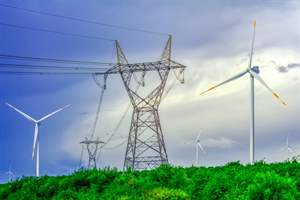
Wind farms contribute an ever-growing share of the energy flowing through the world’s electricity grids. Because those grids have to be stable and reliable, wind farms are required to stay connected even if a short circuit causes the voltage to drop. This prevents a short circuit from knocking out other generators and causing widespread outages.
However, current approaches to doing that can significantly affect the operation of relay devices that protect the transmission lines connecting the wind farm to the grid. To find a better way, WISE researcher Sahar Azad and recent master’s student Javad Zare looked at the issue in a common type of wind farm: doubly fed induction generator (DFIG) systems.
They proposed a relaying scheme that protects the line during short-circuit faults and prevents tripping downstream relays. It relies on three key components: the impedance trajectory captured by the local relay, the local fault current characteristics, and the frequency tracking of the fault current measured at the relays on either end of the transmission line.
Their system uses local current and voltage measurements to detect faults and provide backup protection to downstream relays. Trials on a four-bus test system proved it can provide reliable protection over the entire length of the transmission line.
And because their approach requires very low communications capacity, it overcomes one of the biggest drawbacks of current methods. As a result, it makes it easier than ever to incorporate wind farms as part of a reliable electricity grid.
Researchers: Dr. Sahar Azad and Javad Zare
Source: Azad, S., & Zare, J. (2021). A new relaying scheme for protection of transmission lines connected to DFIG-based wind farms. IET Renewable Power Generation, 15, 2971-2982.